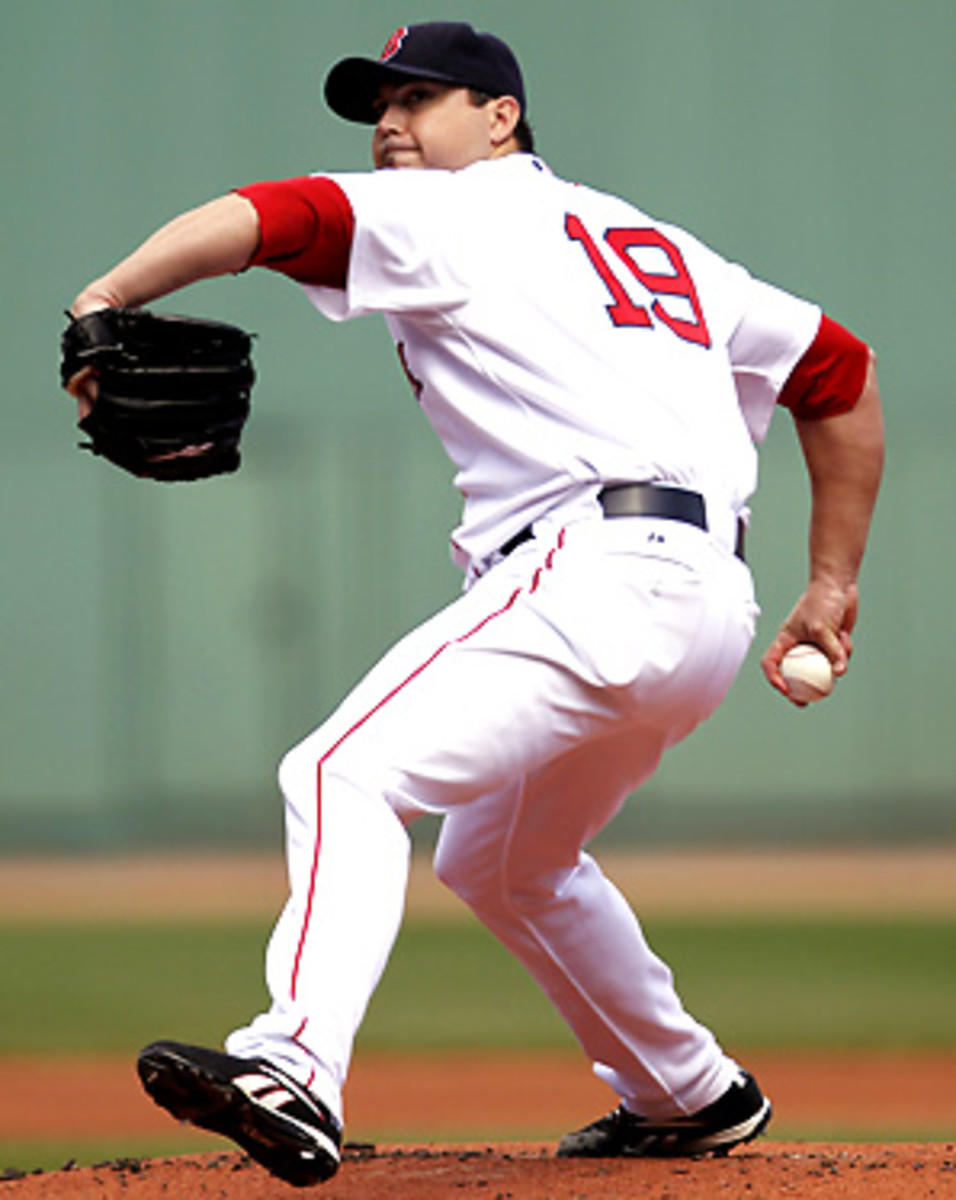
Stable Beckett the key to Boston's fate, AL East pecking order in 2011
FORT MYERS, Fla. -- The Red Sox may have won the offseason by getting the two best offensive players available in Carl Crawford and Adrian Gonzalez, but winning the AL East is another story that will not be so easily written.
"You could see last year that teams were looking to kick our [butt] because we had guys hurt," second baseman Dustin Pedroia said. "That was not a fun feeling. But we don't feel like we're the favorites now. We're good. But on paper doesn't matter. We have to prove it every night."
The Red Sox have yet to miss the playoffs two straight years since the ownership group led by John Henry took over in 2002. Once again, they have built a 95-win team that could win more with good health and less if its starting pitching continues to deteriorate.
As good as the Sox might look on paper, the potential trap door to their season is what becomes of John Lackey, Daisuke Matsuzaka and Josh Beckett -- three veterans whose names are bigger than their recent performances. Lackey's strikeout rate continues to decline and his WHIP continues to go up. Matsuzaka is 13-12 with a 4.99 ERA over the last two years while showing his own slight erosion in strikeout rate.
Beckett, who still has major up side, is the swing player in Boston's rotation. He turns 31 in May and needs to prove he knows how to pitch without premium velocity, which slowly is leaving him. His love affair with the cutter last season was not a quick fix.
Truth is, Beckett hasn't been very good since midway through the 2009 season. In fact, his past 30 starts are worse than the past 30 starts of A.J. Burnett and Freddy Garcia, roundly considered to be question marks in the Yankees rotation:
Lefty Felix Doubront is destined to get a dozen or so starts as a sixth starter waiting in the wings -- appearing as a better option than the Tim Wakefield of the past season and a half (5-11, 5.70 ERA as a starter). Former Yankee Alfredo Aceves, throwing well and getting noticed for his work ethic, is another option. And if there is a surprise fix for Boston, it could be 25-year-old lefty Andrew Miller, the former sixth overall pick of 2006 who has opened eyes early in camp. "He touched 97 [mph] when I saw him," said one scout. "He kept the ball down, threw strikes and looked really good. They may have found something there."
Who says teams shouldn't trade within their division? The Red Sox had their eye on outfielder Carl Crawford before last season even began and were willing to pull off a blockbuster intradivision deal to get Crawford into a Sox uniform.
Boston proposed trading catcher Victor Martinez to Tampa Bay in exchange for Crawford before the season began, according to a baseball source familiar with the proposed deal. Both players were entering their walk years, and both wound up leaving their teams at the end of the year as free agents. The Rays did not immediately reject the deal, but told Boston they would need to pursue one or two other potential moves in order to make it happen. The secondary moves fell through, and thus so too did the Martinez-for-Crawford blockbuster.
Both teams had to live with subpar production from the positions they tried to upgrade. Boston left fielders ranked 11th in OPS. Tampa Bay catchers ranked 10th in OPS.
Nationals general manager Mike Rizzo wants his team to run more. That doesn't always mean more stolen bases. That means better focus and more aggressiveness on the bases.
"It's a mindset," Rizzo said. "Last year we ranked 30th in scoring from second base. That told me we had to be more athletic, but it also told me we have to be more aware and more aggressive on the bases -- secondary leads, looking to take the extra base. ... [Third-base coach] Bo Porter has been a big part of bringing that kind of aggressiveness this spring.
"We also added veterans like Jerry Hairston and Jayson Werth, guys who are not just good base runners but also who share what they know with the younger guys. Jerry Hairston said every time he gets on first base he checks the position of the outfielders. I asked some of our younger guys if they ever did that and a few of them told me they never had heard of it."
The numbers I found showed the Nationals ranked 21st in the percentage of times they scored from second on a single -- not good in any case. The Nats scored 56.4 percent of the time from second a single. Werth was at 71.4 percent (15 of 21) with Philadelphia and Hairston was at 84.6 percent (11 of 13) with San Diego.
What else do you find when you gauge how often teams score from second on a single? The NL is much more aggressive. Four of the top five clubs last year were in the NL; four of the bottom five were in the AL.
Here's what else you find: The Dodgers might miss Larry Bowa, the most aggressive third-base coach in baseball who was not asked back this year. With Bowa waving them home and giving them the mindset Rizzo wants Porter to bring the Nationals, the Dodgers scored more frequently from second base on a single than any team in baseball. Here are the best and the worst at scoring from second on a single last season:





